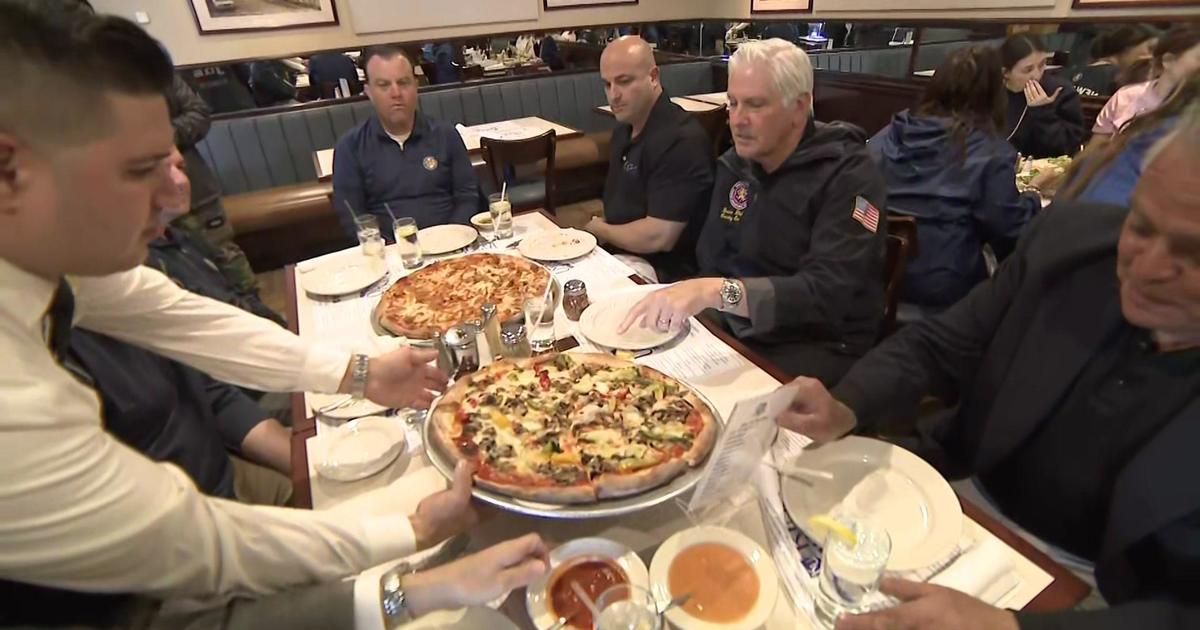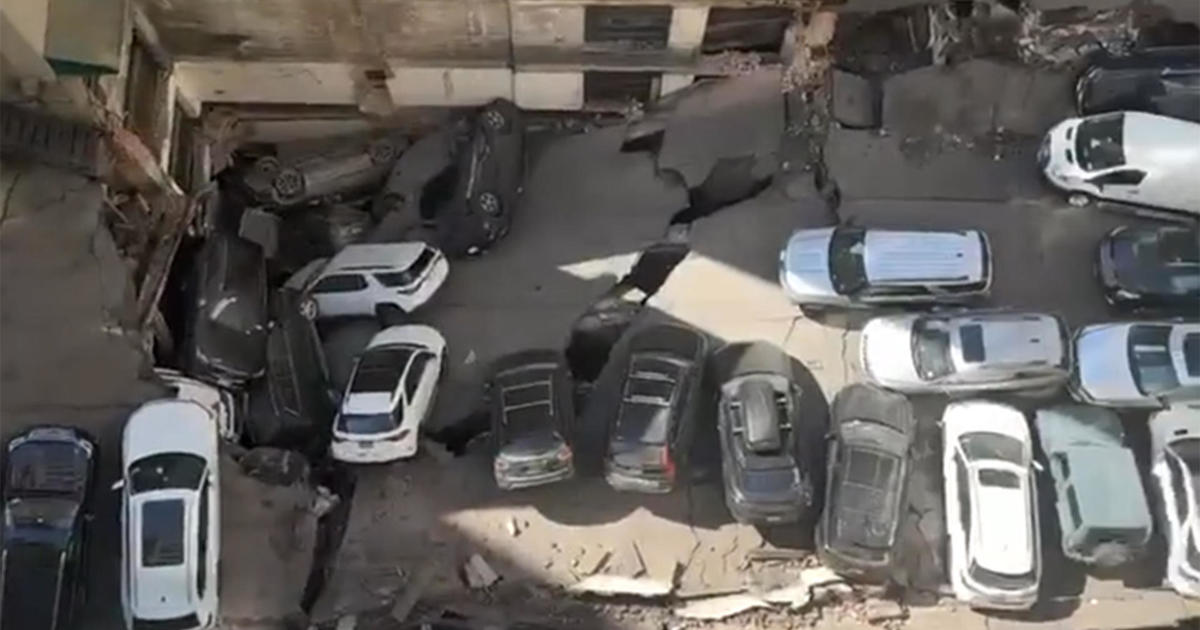NTSB: Amtrak Train Accelerated 30 MPH Within About 1 Minute Before Wreck
PHILADELPHIA (CBSNewYork/AP) -- In a period of just over a minute, an Amtrak train accelerated from 70 mph to more than 100 mph before it skipped the tracks and crashed in Philadelphia this week, according to the National Transportation Safety Board.
NTSB member Robert Sumwalt said investigators will soon meet with the engineer in the deadly Amtrak crash in Philadelphia this week. There had been reports that engineer Brandon Bostian had refused to talk to investigators, but Sumwalt said the reports were not true and that Bostian has agreed to talk to investigators.
Speaking one-on-one to CBS2's Jessica Schneider Thursday evening, Sumwalt said investigators plan to interview the engineer "in the next few days."
"We're really pleased he's agreed to be interviewed by the NTSB, and we're just waiting for the final arrangements on that," he said. "He suffered a lot of trauma, of course, like others, so we want to make sure he's physically able to do it."
Engineer Bostian, of Queens, has hired a lawyer who says his client has no recollection of the crash. Appearing on ABC's "Good Morning America," Bostian's lawyer, Robert Goggin, said the engineer suffered a concussion in the crash and had 14 staples in his head, along with stitches in one leg.
"He remembers coming into curve. He remembers attempting to reduce seed and thereafter he was knocked out,'' Goggin said Thursday. But he said Bostian does not recall anything out of the ordinary and does not remember using the emergency brake.
The lawyer said the last thing the engineer remembered was coming to, looking for his bag, retrieving his cellphone and calling 911 for help. He said the engineer's cellphone was off and stored in his bag before the accident, as required.
NTSB investigators said they plan to sit down with Bostian, hand him a blank piece of paper, and write down what he does remember.
Goggin said his client was distraught when he learned of the devastation and believes the engineer's memory will likely return once the head injury subsides.
Goggin said that his client "cooperated fully'' with police, immediately consented to a blood test and surrendered his cellphone. He said he had not been drinking or doing drugs. Police had said Wednesday that the engineer had refused to give a statement to law enforcement.
Meanwhile, the NTSB has also reviewed video from a forward-facing video recorder, which showed that 65 seconds before the recording cut off at the time of the crash, the speed was above 70 mph. The speed accelerated above 80 mph within 22 seconds, 90 mph within another 12 seconds, and 100 mph within another 15 seconds.
Watch: NTSB Update On Amtrak Derailment
The speed topped out at 106 mph as it entered the curve – where the speed limit drops to 50 mph, Sumwalt said earlier.
Just before entering the curve, the engineer applied an emergency brake. Seconds later, the train tilts about 10 degrees to the right and the recording goes blank, Sumwalt said.
Sumwalt declined to speculate on whether the acceleration would be considered "rapid." He could not say whether the engineer manually accelerated the train or whether it was automated.
NTSB: Amtrak Train Accelerated 30 MPH Within About 1 Minute Before Wreck
Sumwalt said the engineer applied the emergency brakes moments before the crash but slowed the train to only 102 mph by the time the locomotive's black box stopped recording data. The speed limit just before the bend is 80 mph, he said.
Sumwalt said the NTSB has also begun interviewing passengers who are currently in the hospital. He said the agency wants to find out where they were seated and how they were injured, in order to correlate their seating with their injuries.
The NTSB has released control of the tracks where the wreck happened back to Amtrak, and will wait for the track and overhead catenary to be repaired, Sumwalt said. Afterward, the NTSB will do tests with a similar train to the one that derailed, under similar lighting and environmental conditions.
Meanwhile, another body was found in the wreckage Thursday morning, bringing the death toll to eight, officials said.
As CBS2's Schneider reported, the death toll is heartbreaking, but it brings the search to a close as all 243 passengers have been accounted for.
Fire Commissioner Derrick Sawyer said a search dog found the body in the mangled first car.
"At 8 o'clock this morning, we received a call to bring back our dog – our cadaver dog. So we worked in conjunction with a dog from PA Task Force and the Police Department to go out and do another search of that first car," Sawyer said. "A dog came on a couple of spots, and we were able to find one other passenger in the wreckage."
The final victim to be discovered was Bob Gildersleeve, a Maryland resident who worked for Ecolab for 22 years, according to published reports.
All of the deceased have now been identified.
Probe Into Deadly Amtrak Derailment Focusing On Engineer As 8th Body Found
The debris field was so extensive that it took nearly 36 hours to locate all the victims. A total of 43 people remain in local hospitals around Philadelphia – several in critical condition.
At the crash site, there is a massive cleanup and rebuilding effort under way. New rail lines were being trucked in practically every half hour late Thursday.
Amtrak also inspected the stretch of track Tuesday, just hours before the accident, and found no defects, according to the Federal Railroad Administration.
PHOTOS: Amtrak Train Derailment
Probe Into Deadly Amtrak Derailment Focusing On Engineer
Philadelphia Mayor Michael Nutter said he was frustrated to learn how fast the train was going. "Part of the focus has to be, what was the engineer doing?'' Nutter said. "Why are you traveling at that rate of speed?''
The mayor blasted Bostian saying, "Clearly, it was reckless," but Sumwalt said, "We're here right now to find out what happened and that's what we want to do. We're not casting any judgement calls at this point right now."
More than 200 people aboard the Washington-to-New York train were injured in the wreck, which happened in a decayed industrial neighborhood not far from the Delaware River just before 9:30 p.m. Tuesday. Passengers crawled out the windows of the torn and toppled rail cars in the darkness and emerged dazed and bloody, many of them with broken bones and burns. At least 10 people remained hospitalized in critical condition on Wednesday.
The dead in Tuesday's crash included an Associated Press employee, a midshipman at the U.S. Naval Academy, a Wells Fargo executive, a college administrator and the CEO of an educational startup.
It was the nation's deadliest train accident in nearly seven years. There is no Amtrak service between Philadelphia and New York.
Effective Friday, Amtrak service will operate as scheduled between New York and Boston, and modified service will be in place between Washington and Philadelphia through Monday.
But service between New York and Philadelphia is expected to be suspended through Monday while repairs are made at the crash site. NJ TRANSIT and SEPTA are advised as alternate methods of transportation to connect between New York City and Philadelphia.
The NTSB finding about the train's speed corroborated an AP analysis done earlier in the day of surveillance video from a spot along the tracks. The AP concluded from the footage that the train was speeding at approximately 107 mph moments before it entered the curve.
Despite pressure from Congress and safety regulators, Amtrak had not installed along that section of track Positive Train Control, a technology that uses GPS, wireless radio and computers to prevent trains from going over the speed limit. Most of Amtrak's Northeast Corridor is equipped with Positive Train Control.
"Based on what we know right now, we feel that had such a system been installed in this section of track, this accident would not have occurred,'' Sumwalt said.
Sumwalt told Schneider that without positive train control, there are no bells or other systems in place at all to notify engineers that they are going too fast.
"There are not. Without the positive train control or ACSES (Advanced Civil Speed Enforcement System), Amtrak calls it, there are no onboard alerting systems to say that you're going too fast," Sumwalt said.
Amtrak has promised to install the system where it is not in place.
Blumenthal Blames Congressional Funding Cuts For Slow Implementation Of Safety Technology
"Today, we're committing to – I'm committing to meeting the requirement of Positive Train Control that will happen on the Northeast Corridor by the end of this year," Amtrak President and chief executive officer Joseph Boardman said.
Boardman also issued a public message, in which Amtrak accepted some blame for the wreck.
"With truly heavy hearts, we mourn those who died. Their loss leaves holes in the lives of their families and communities," Boardman wrote. "On behalf of the entire Amtrak family, I offer our sincere sympathies and prayers for them and their loved ones. Amtrak takes full responsibility and deeply apologizes for our role in this tragic event."
The statement added: "Our goal is to fully understand what happened and how we can prevent a similar tragedy from occurring in the future. We will also continue to focus on completing Positive Train Control implementation in the Northeast Corridor by December of 2015."
The engine for the train -- the Amtrak City Sprinter No. 601 – had been in service for one year. Sumwalt said investigators would find out if there were concerns about problems with the engine that might not have been brought to light.
"That's a great question, but we don't know of any widespread problems with this particular locomotive -- with this model -- but we are going to look at that," he said.
The notoriously tight curve is not far from the site of one of the deadliest train wrecks in U.S. history: the 1943 derailment of the Congressional Limited, bound from Washington to New York. Seventy-nine people were killed.
The crash took place about 10 minutes after the train pulled out of Philadelphia's 30th Street Station with 238 passengers and five crew members listed aboard. The locomotive and all seven passenger cars hurtled off the track as the train made a left turn, Sumwalt said.
The area where the wreck happened is known as Frankford Junction, situated in a neighborhood of warehouses, industrial buildings and homes.
Amtrak carries 11.6 million passengers a year along its busy Northeast Corridor, which runs between Washington and Boston.
(TM and © Copyright 2015 CBS Radio Inc. and its relevant subsidiaries. CBS RADIO and EYE Logo TM and Copyright 2015 CBS Broadcasting Inc. Used under license. All Rights Reserved. This material may not be published, broadcast, rewritten, or redistributed. The Associated Press contributed to this report.)



